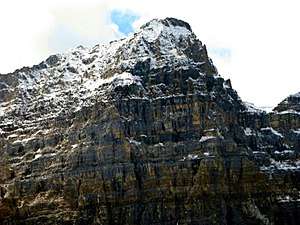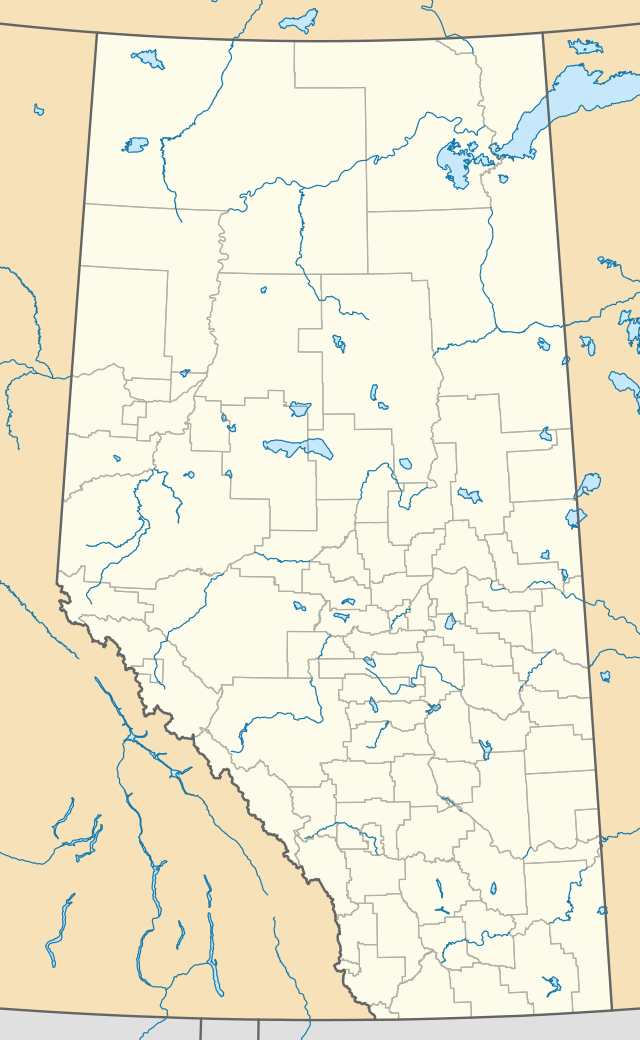Mount Tuzo
Mount Tuzo, previously "Peak Seven" or "Shagowa", was named in 1907 after its first ascendant Henrietta L. Tuzo. It is located within the Valley of the Ten Peaks in the Canadian Rockies, along the Continental Divide, which forms the boundary between British Columbia and Alberta in this region.[1][2]
| Mount Tuzo | |
|---|---|
 Mount Tuzo | |
| Highest point | |
| Elevation | 3,248 m (10,656 ft) [1] |
| Prominence | 210 m (690 ft) [2] |
| Listing | Mountains of Alberta Mountains of British Columbia |
| Coordinates | 51°18′06″N 116°13′42″W [3] |
| Geography | |
 Mount Tuzo Location in Alberta | |
| Location | Alberta/British Columbia, Canada |
| Parent range | Valley of the Ten Peaks |
| Topo map | NTS 82N/08[3] |
| Climbing | |
| First ascent | 15 September 1906 Henrietta Tuzo, Christian Kaufmann |
| Easiest route | Peak 7 |
Geology
Like other mountains in Banff Park, Mount Tuzo is composed of sedimentary rock laid down from the Precambrian to Jurassic periods.[4] Formed in shallow seas, this sedimentary rock was pushed east and over the top of younger rock during the Laramide orogeny.[5]
Climate
Based on the Köppen climate classification, Mount Tuzo is located in a subarctic climate with cold, snowy winters, and mild summers.[6] Temperatures can drop below -20 C with wind chill factors below -30 C.
See also
- List of peaks on the British Columbia-Alberta border
References
- "Mount Tuzo". PeakFinder.com. Retrieved 2019-09-13.
- "Mount Tuzo". Bivouac.com. Retrieved 2019-09-13.
- "Mount Tuzo". Geographical Names Data Base. Natural Resources Canada. Retrieved 2019-09-13.
- Belyea, Helen R. (1960). The Story of the Mountains in Banff National Park (PDF). parkscanadahistory.com (Report). Ottawa: Geological Survey of Canada. Archived (PDF) from the original on 2015-10-02. Retrieved 2019-09-13.
- Gadd, Ben (2008). "Geology of the Rocky Mountains and Columbias" (PDF). Archived from the original (PDF) on 2012-04-20. Retrieved 2010-01-01.
- Peel, M. C.; Finlayson, B. L. & McMahon, T. A. (2007). "Updated world map of the Köppen−Geiger climate classification". Hydrol. Earth Syst. Sci. 11: 1633–1644. ISSN 1027-5606.